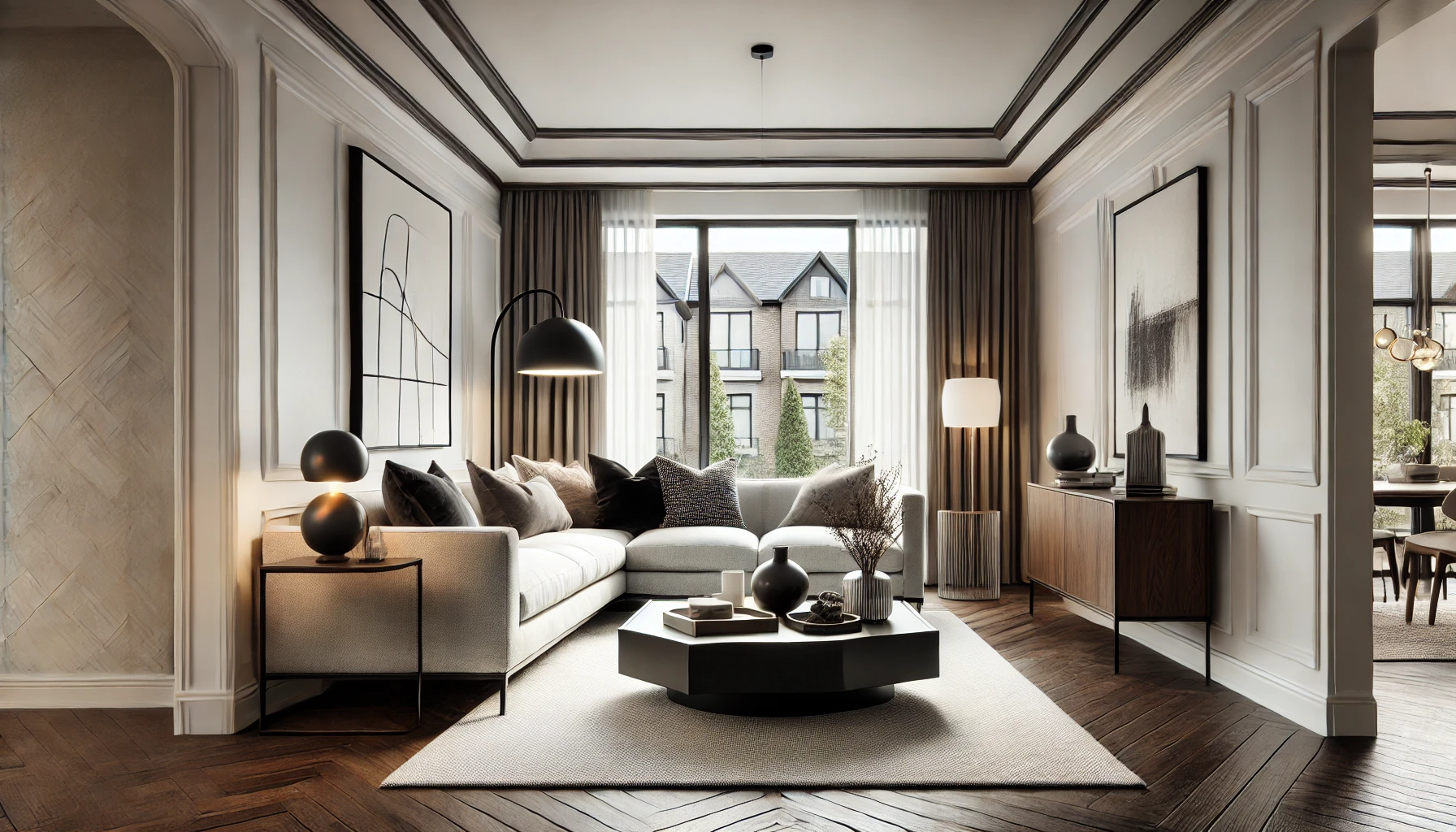
Balancing Light and Dark Elements in Home Staging
When staging a home, creating balance and harmony within a space is key to making it visually appealing to potential buyers. One of the most effective ways to achieve this is by balancing light and dark elements—whether it’s through colors, materials, or furnishings. By carefully combining contrasting tones, you can add depth, dimension, and interest to any room. In this post, we’ll explore the importance of balancing light and dark elements in home staging and share tips on how to create a cohesive, inviting space in homes throughout Toronto and the GTA.
Why Balance Matters in Home Staging
Creating Depth and Contrast
• One of the main benefits of balancing light and dark elements is the depth and contrast it adds to a space. Light colors tend to open up a room and make it feel larger, while dark colors add richness and warmth. When combined, these contrasting tones create a dynamic and layered look that draws the eye and adds interest to the design.Highlighting Key Features
• A strategic mix of light and dark elements can help to highlight the best features of a home. For example, a dark accent wall can make a light-colored fireplace or window frame stand out, drawing attention to architectural details. Conversely, lighter furniture can pop against a dark backdrop, making the room feel stylish and well-designed.Setting the Mood
• The combination of light and dark tones can also influence the mood of a space. Light, airy colors can evoke feelings of openness and calm, while darker hues add sophistication and intimacy. By balancing these elements, you can create a space that feels both welcoming and refined, appealing to a wide range of buyers.Tips for Balancing Light and Dark Elements in Staging
Start with a Neutral Base
• When staging, it’s often helpful to start with a neutral base and then layer in light and dark elements to create contrast. Neutral tones such as whites, grays, or beiges provide a versatile backdrop that works well with both light and dark furnishings. Once you have a neutral foundation, you can begin adding darker accents through furniture, decor, or textiles to bring depth to the space.Incorporate Dark Accents for Depth
• Dark accents can add drama and depth to a room. Whether it’s a statement piece of furniture like a dark wood coffee table or a rich, velvet armchair, darker elements can ground the space and create visual interest. Use these accents sparingly to avoid overwhelming the room, focusing on one or two key pieces that stand out against the lighter background.Balance Dark Walls with Light Furnishings
• If you’re working with dark walls, balance the space by incorporating light-colored furnishings and decor. A light sofa, area rug, or curtains can brighten the room and keep it from feeling too heavy. This contrast creates a sophisticated yet inviting atmosphere that appeals to buyers looking for a stylish, well-designed home.Use Light and Dark Textures
• Textures play an important role in balancing light and dark elements. Dark, textured materials like leather or wood can be paired with lighter fabrics such as linen or cotton to create a harmonious blend of soft and hard elements. Mixing textures also adds depth and dimension to the space, making it feel more layered and complete.Focus on Lighting
• Proper lighting is essential when balancing light and dark elements. Darker rooms can sometimes feel closed off or moody, but the right lighting can transform the space. Use natural light wherever possible by keeping windows unobstructed. In darker areas, add lamps, pendant lights, or sconces to brighten the room and create a warm, welcoming ambiance.Contrast Accessories
• Accessories like throw pillows, blankets, artwork, and decor items offer an easy way to balance light and dark elements without major changes. Light-colored accessories on a dark sofa, or dark frames on light walls, create contrast and keep the room feeling fresh and dynamic.Examples of Light and Dark Balance in Staging
Living Room
• A living room with light gray walls and dark wood floors can be balanced by incorporating a light-colored area rug and sofa. Add dark accent pillows and a coffee table to create a cohesive design that feels both open and grounded.Kitchen
• In a kitchen with white cabinets and countertops, introduce dark elements through the backsplash, light fixtures, or barstools. This adds contrast and prevents the space from feeling too sterile or one-dimensional.Bedroom
• In the bedroom, dark bedding on a light bed frame or a dark headboard with light linens creates a striking contrast. This combination can make the room feel luxurious while maintaining a cozy, relaxing atmosphere.Balancing light and dark elements in home staging is an essential strategy for creating a visually appealing, cohesive space. By combining contrasting tones and textures, you can enhance the room’s depth, highlight key features, and set the mood for a welcoming environment. At Pure Edge Furniture Rental, we provide expert staging services designed to help you find the perfect balance of light and dark elements, ensuring your property stands out to potential buyers.
Ready to create a beautifully balanced space? Contact us today to explore our expert staging services in Toronto and the GTA. Let Pure Edge Furniture Rental help you achieve a stunning, market-ready home with the perfect blend of light and dark elements.
0 comments